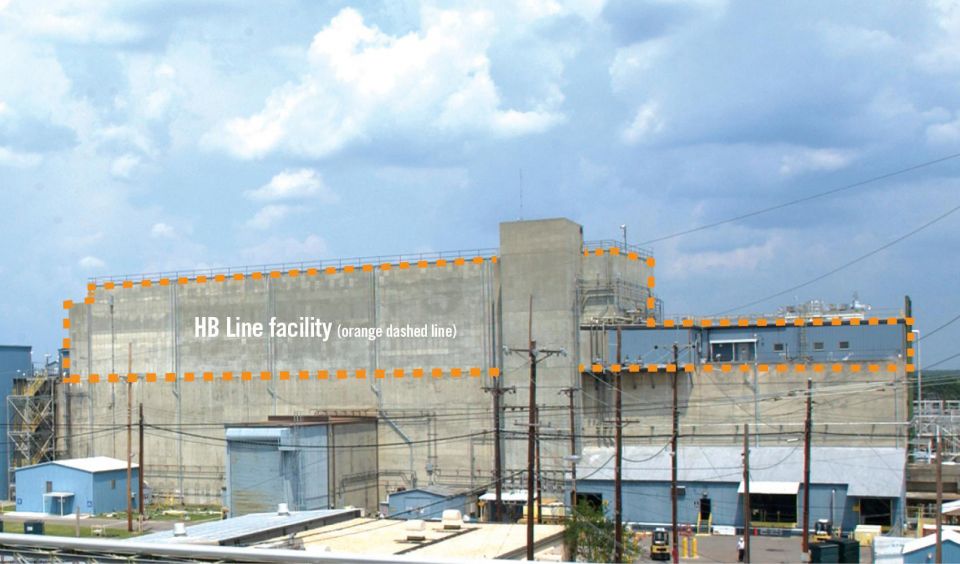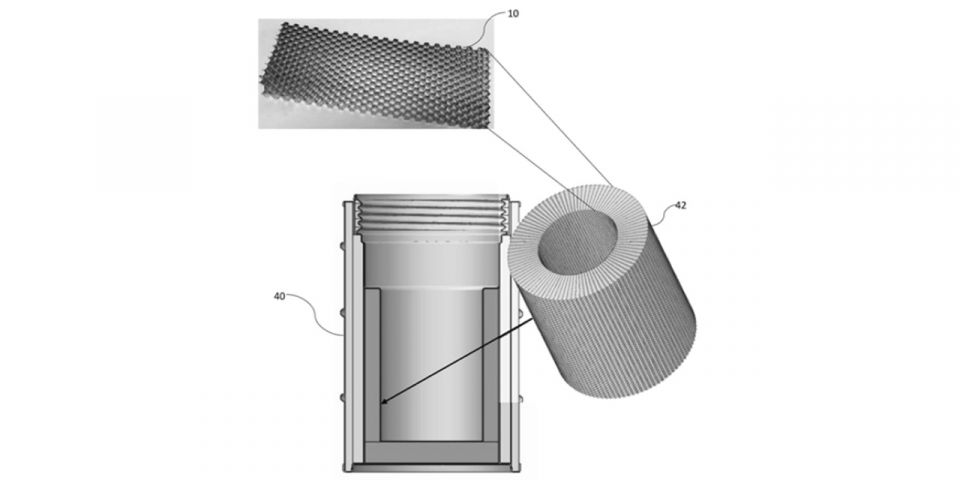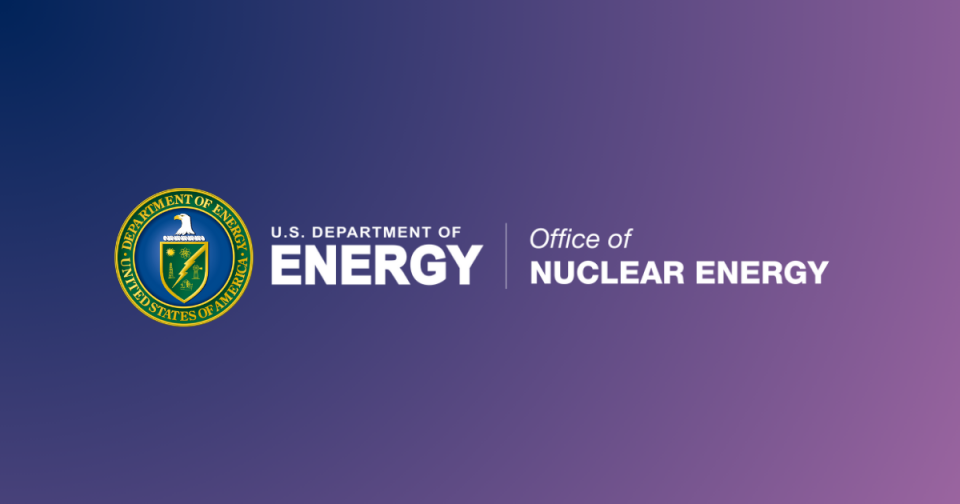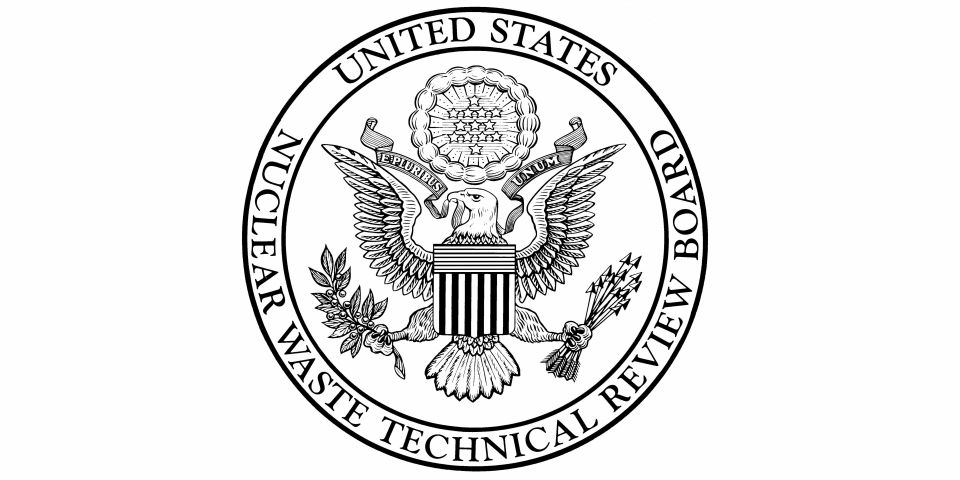Simulated radiological release tests SRS response teams
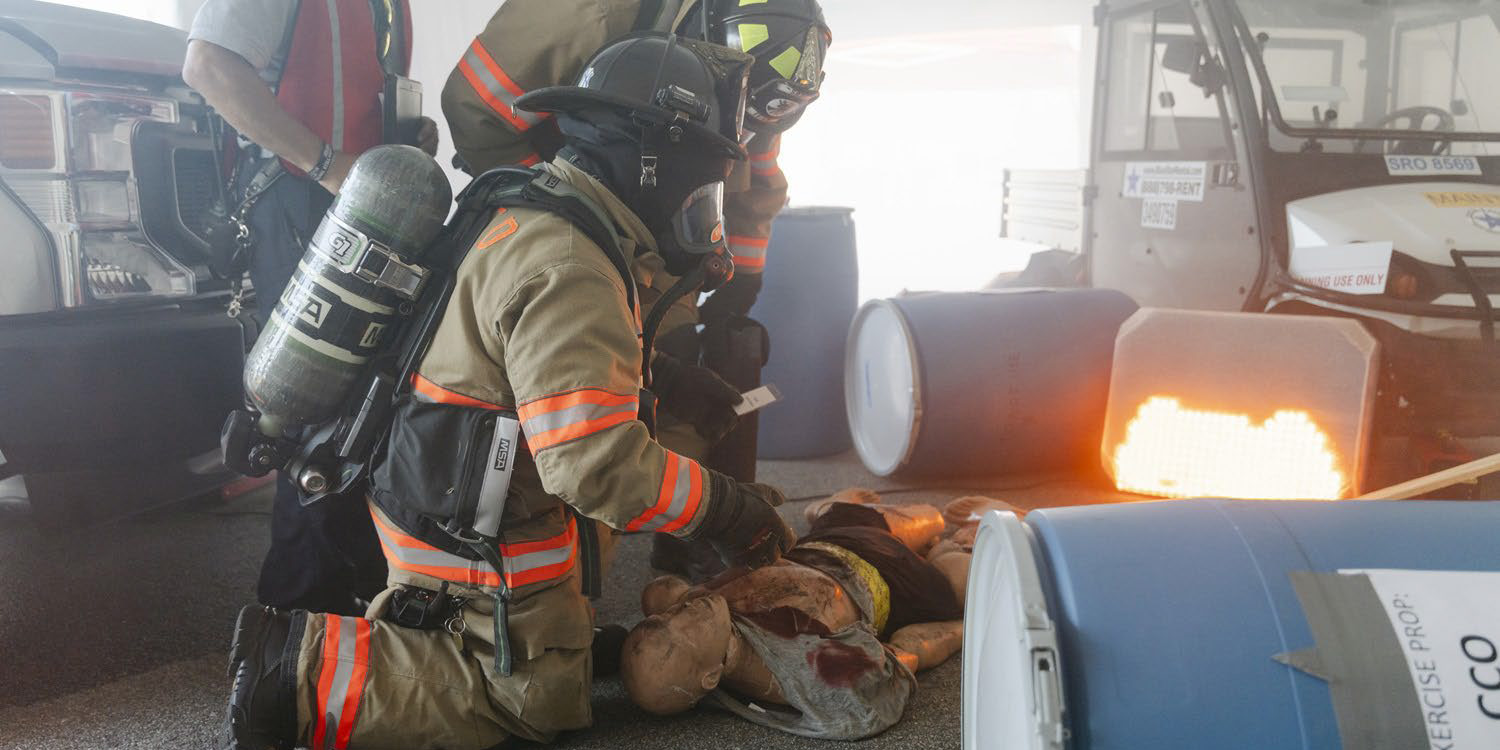
Earlier this month, nearly 250 personnel at the Department of Energy’s Savannah River Site in South Carolina took part in an annual exercise to test preparedness for a radiological release and contamination emergency.
“This exercise is a valuable opportunity for us to train and respond under pressure in a no-fault environment,” said Scott Craft, Environmental Management Operations Safety and Health Area manager. “This is fantastic way to validate the effectiveness of our emergency response, self-identify improvement areas, and demonstrate our commitment to safety.”
Each year, SRS performs one graded site-level emergency preparedness drill, three Emergency Response Organization activation drills, more than 40 facility-level drills, and several tabletop drills. The type and location of each scenario are determined by a five-year plan that cycles through all areas and potential hazards at the site.
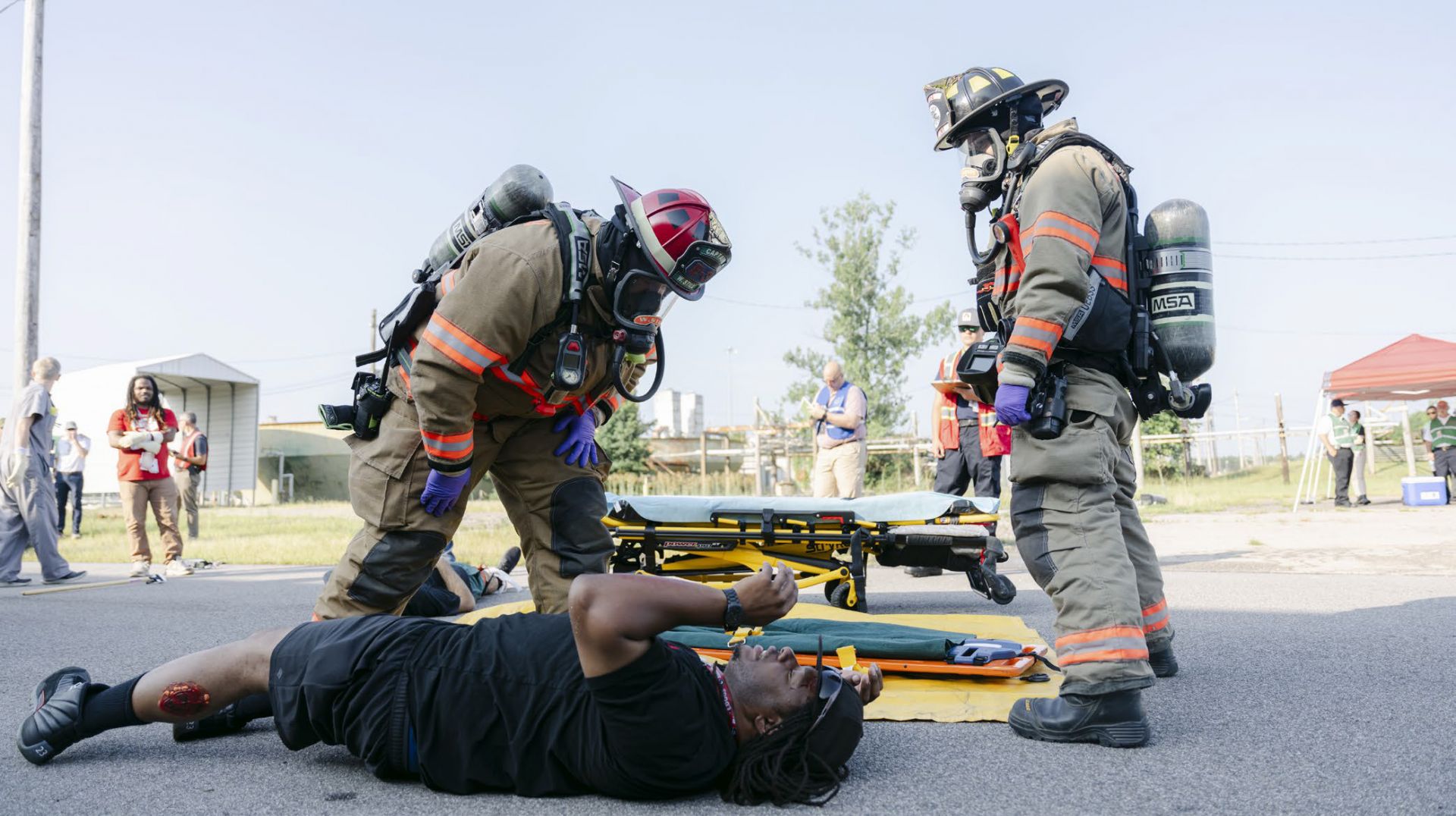
SRS firefighters rescue a role-playing employee who was injured from a simulated vehicle crash. (Photo: DOE/SRNS)
The activity: This year’s emergency scenario unfolded in the site’s K Area, which is responsible for the removal of plutonium from South Carolina. After a mock thunderstorm microburst developed quickly over the area, a delivery truck lost control and simulated crashing into K Area’s Criticality Control Overpack (CCO) pad. The “crash” resulted in a radiological release from a CCO drum—resulting in several mock injuries, one simulated fatality, and protective actions issued for the area.
Personnel from Savannah River Nuclear Solutions, the site’s management and operations contractor, responded to the release, using personal protective equipment to aid the contaminated and injured individuals, transferring them to off-site medical facilities.
“It’s quite the challenge to provide critical care to an injured patient while ensuring that external medical facilities are comfortable with chemical and radiological hazards,” said Craft. “Success is no accident, and this interaction with multiple off-site medical teams ensures our readiness for any real emergency.”

Hospital staff collaborated with SRS to practice treating and decontaminating an injured patient as part of the emergency exercise. (Photo: DOE/SRNS)
Participants: The simulation included a coroner, ambulance transports, and contamination control measures. SRS groups participating in the exercise included the SRS Emergency Response Organization, Site Medical, Protective Force, Law Enforcement, Field Monitoring, Radiological Protection, and the SRS Fire Department.
“We had full participation from outside entities like the Barnwell Coroner, Doctors Hospital, and WellStar MCG Health to make this exercise as real as possible,” said Amber Rodriquez, SRNS Site Drills and Exercise manager. “Whether an emergency is radiological, chemical, severe weather, security, or a combination of all, safeguarding employees, the public, and the environment will continue to be our top priority.”
SRS fire chief Travis Scott commended the coordination between the SRS Fire Department and facility personnel. “Our job requires that we respond to unique hazards on SRS, which makes regularly conducting drills and exercises helpful in ensuring operational preparedness for our first responders,” he said.
Extra eyes: This year, SRS incorporated Argonne National Laboratory’s Public Affairs Science and Technology (PAST) Fusion Cell Academy. PAST Fusion Cell is a first-of-its-kind research and training facility aimed at improving all aspects of public affairs pertaining to emergency management. Five Argonne professionals attended the exercise, with one assisting the intelligence response team, two acting as reporters, and one acting as videographer.
“From a communications standpoint, Argonne was able to pinpoint our limitations and share best practices across the Department of Energy Complex,” said Rodriquez. “They added another layer of realism into this exercise by simulating media, interacting with SRNS executives as press, formulating outside news reports, and blasting fake news on social media.”


